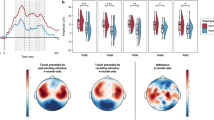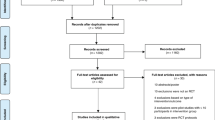Abstract
Comparative studies utilizing avian and mammalian embryos and neonates have proven particularly useful in exploring how alterations in sensory experience during the perinatal period can affect subsequent development. This article reviews research drawn from comparative developmental psychobiology and concludes that the effects of modified sensory stimulation on perceptual and behavioral development depend on several related factors, including the timing of stimulation relative to the developmental stage of the young organism, the overall amount of sensory stimulation provided or denied, and the type of sensory stimulation presented. Directions for future research on the care of the high-risk infant are discussed.
This is a preview of subscription content, access via your institution
Access options
Subscribe to this journal
Receive 12 print issues and online access
$259.00 per year
only $21.58 per issue
Buy this article
- Purchase on Springer Link
- Instant access to full article PDF
Prices may be subject to local taxes which are calculated during checkout
Similar content being viewed by others
Author information
Authors and Affiliations
Additional information
The writing of this article was supported by grants RO1-MH62225 and KO2-MH01210 from the National Institute of Mental Health.
Rights and permissions
About this article
Cite this article
Lickliter, R. Atypical Perinatal Sensory Stimulation and Early Perceptual Development: Insights From Developmental Psychobiology. J Perinatol 20 (Suppl 1), S45–S54 (2000). https://doi.org/10.1038/sj.jp.7200450
Published:
Issue Date:
DOI: https://doi.org/10.1038/sj.jp.7200450
This article is cited by
-
Multisensory stimulation bundles on sleep and neurobehavioral development in the first year after birth in very preterm infants: a randomized crossover controlled study protocol
Trials (2023)
-
Sensory-based interventions in the NICU: systematic review of effects on preterm brain development
Pediatric Research (2022)
-
Live Maternal Speech and Singing Increase Self-Touch and Eye-Opening in Preterm Newborns: A Preliminary Study
Journal of Nonverbal Behavior (2020)
-
Is Less Noise, Light and Parental/Caregiver Stress in the Neonatal Intensive Care Unit Better for Neonates?
Indian Pediatrics (2018)
-
Avian prenatal auditory stimulation: progress and perspectives
Behavioral Ecology and Sociobiology (2018)



